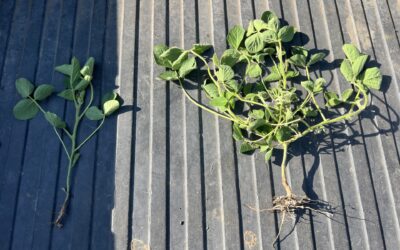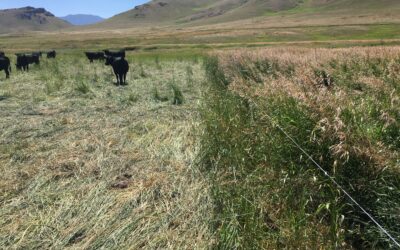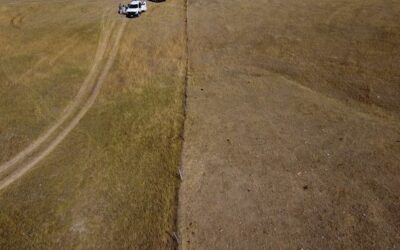Soil Respiration
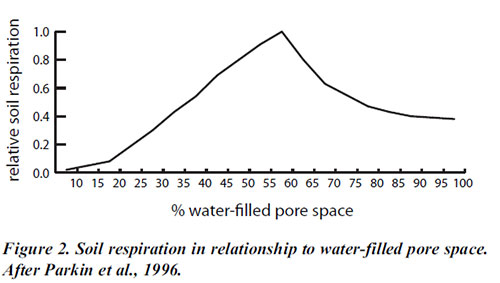 Carbon dioxide (CO2) release from the soil surface is referred to as soil respiration. This CO2 results from several sources, including aerobic microbial decomposition of soil organic matter (SOM) to obtain energy for their growth and functioning (microbial respiration), plant root and faunal respiration, and eventually from the dissolution of carbonates in soil solution. Soil respiration is one measure of biological activity and decomposition. The rate of CO2 release is expressed as CO2-C lbs/acre/day (or kg/ha/d). It can be measured by simple field methods (e.g. fig. 1) or more sophisticated field and laboratory methods. During the decomposition of SOM, organic nutrients contained in organic matter (e.g., organic phosphorus, nitrogen, and sulfur) are converted to inorganic forms that are available for plant uptake. This conversion is known as mineralization. Soil respiration is also known as carbon mineralization.
Carbon dioxide (CO2) release from the soil surface is referred to as soil respiration. This CO2 results from several sources, including aerobic microbial decomposition of soil organic matter (SOM) to obtain energy for their growth and functioning (microbial respiration), plant root and faunal respiration, and eventually from the dissolution of carbonates in soil solution. Soil respiration is one measure of biological activity and decomposition. The rate of CO2 release is expressed as CO2-C lbs/acre/day (or kg/ha/d). It can be measured by simple field methods (e.g. fig. 1) or more sophisticated field and laboratory methods. During the decomposition of SOM, organic nutrients contained in organic matter (e.g., organic phosphorus, nitrogen, and sulfur) are converted to inorganic forms that are available for plant uptake. This conversion is known as mineralization. Soil respiration is also known as carbon mineralization.
Relationship to Soil Function
Soil respiration reflects the capacity of soil to support soil life including crops, soil animals, and microorganisms. It describes the level of microbial activity, SOM content and its decomposition. In the laboratory, soil respiration can be used to estimate soil microbial biomass and make some inference about nutrient cycling in the soil. Soil respiration also provides an indication of the soil’s ability to sustain plant growth. Excessive respiration and SOM decomposition usually occurs after tillage due to destruction of soil aggregates that previously protected SOM and increased soil aeration. Depleted SOM, reduced soil aggregation, and limited nutrient availability for plants and microorganisms can result in reduced crop production in the absence of additional inputs. The threshold between accumulation and loss of organic matter is difficult to predict without knowledge of the amount of carbon added.
Problems with Poor Function
Reduced soil respiration rates indicate that there is little or no SOM or aerobic microbial activity in the soil. It may also signify that soil properties that contribute to soil respiration (soil temperature, moisture, aeration, available N) are limiting biological activity and SOM decomposition. With reduced soil respiration, nutrients are not released from SOM to feed plants and soil organisms. This affects plant root respiration, which can result in the death of the plants. Incomplete mineralization of SOM often occurs in saturated or flooded soils, resulting in the formation of compounds that are harmful to plant roots, (e.g. methane and alcohol). In such anaerobic environments, denitrification and sulfur volatilization usually occur, contributing to greenhouse gas emissions and acid deposition.
Improving Soil Respiration
The rate of soil respiration under favorable temperature and moisture conditions is generally limited by the supply of SOM. Agricultural practices that increase SOM usually enhance soil respiration. The following practices have the potential to significantly improve SOM and indirectly soil respiration when other factors are at an optimum:
- Conservation tillage (no-till, strip-till, mulch till, etc.)
- Application of manure and other organic by-products
- Rotations with high residue and deep-rooted crops
- Cover and green manure crops
- Irrigation or drainage
- Controlled traffic
This Page Was Created Utilizing Text And Images From These Sources:
Soil Respiration , Soil Quality Indicators Fact Sheet- USDA Natural Resources Conservation Service
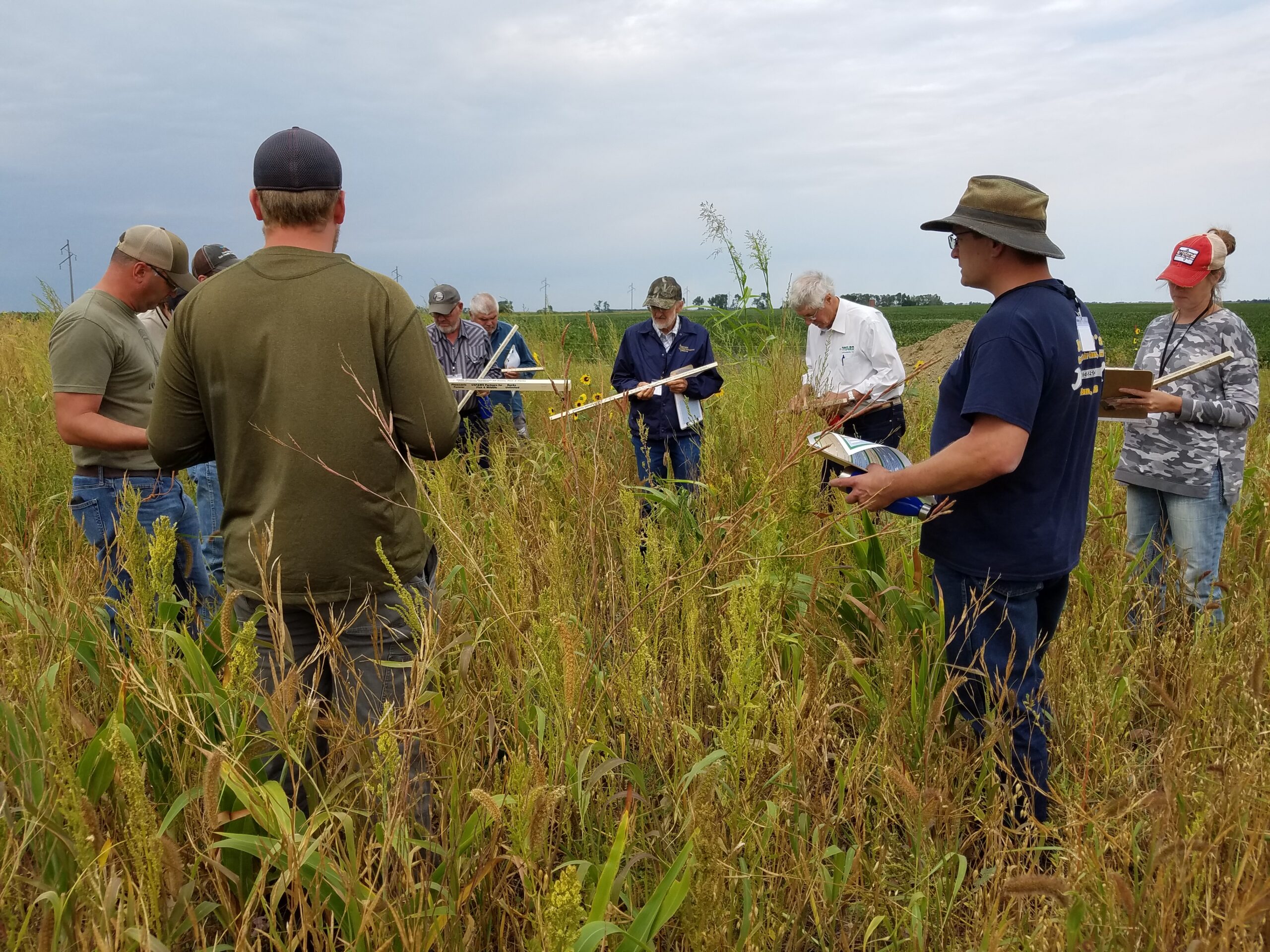
West River Soil Health School Registration Open!
In 2024, the South Dakota Soil Health Coalition will host an additional Soil Health School in west of the Missouri River! The 2024 West River Soil Health School with be held June 26-27 near Caputa, SD! This school will focus on issues specific to the land, climate, and ag production systems of wester South Dakota. Class size is limited, so early registration is strongly encouraged!
News & Events
Farmer reaps higher yields by interseeding soybeans
By Stan Wise Alex Frasier has spent a lot of time studying what it takes to grow a successful crop. After studying ag production and precision technology at Lake Area Technical College, he has worked in ag retail and currently works as an agronomist in Aberdeen, SD....
Farm and ranch innovators to share new ideas at Soil Health Conference
By Stan Wise PIERRE, SD — Before Cooper Hibbard came home to manage his family’s ranch, he studied ag business, rangeland resources and Spanish at California Polytechnic State University and then worked on ranches all over the world. That education and experience...
Wintertime is decision time
By Stan Wise PIERRE, SD – It’s often said that the best time to start improving your land was 20 years ago, but the second-best time is right now. That statement might be harder for ranchers to swallow with winter on their doorstep, nothing growing in their pastures,...
